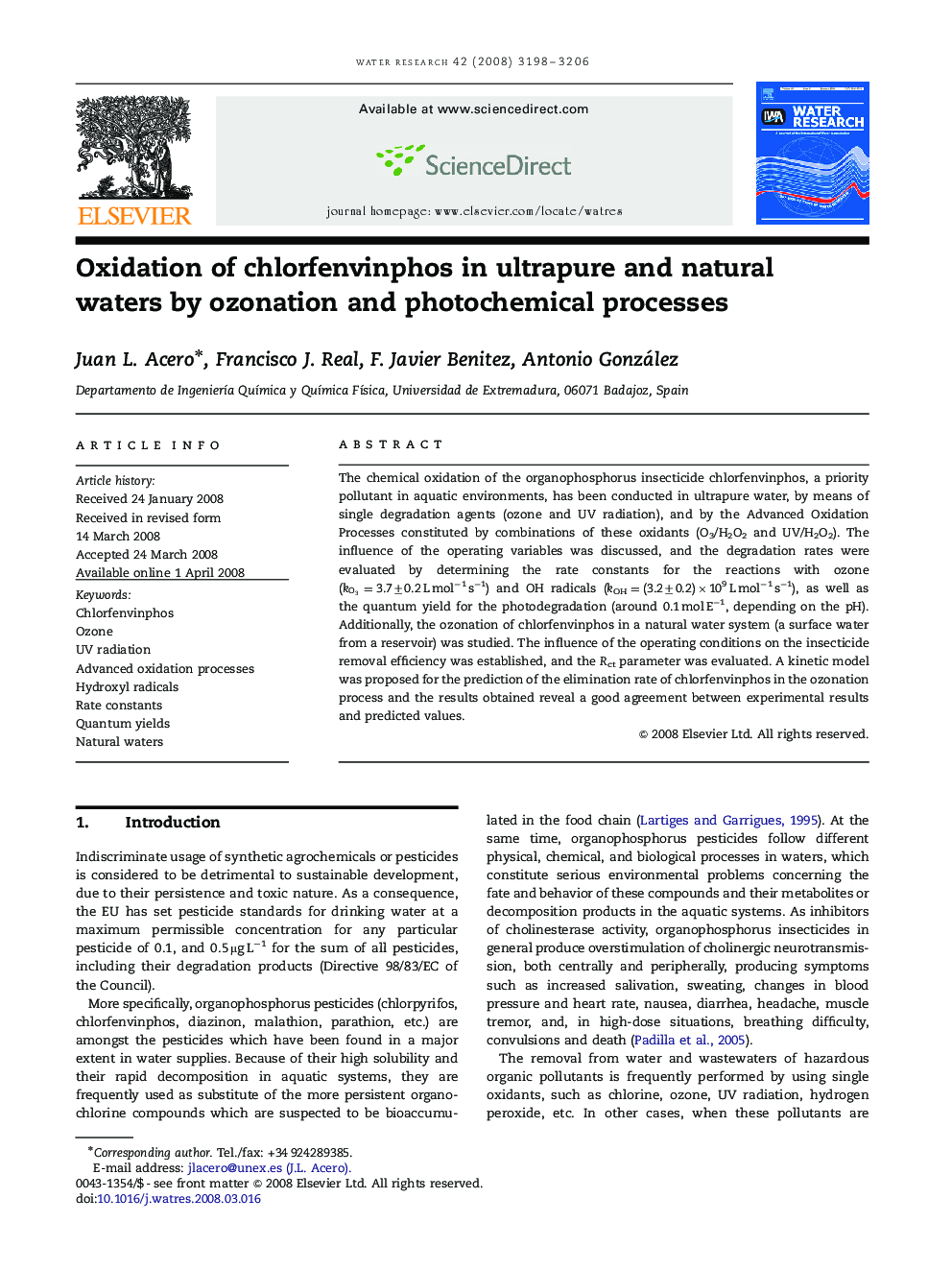| Article ID | Journal | Published Year | Pages | File Type |
|---|---|---|---|---|
| 4485593 | Water Research | 2008 | 9 Pages |
The chemical oxidation of the organophosphorus insecticide chlorfenvinphos, a priority pollutant in aquatic environments, has been conducted in ultrapure water, by means of single degradation agents (ozone and UV radiation), and by the Advanced Oxidation Processes constituted by combinations of these oxidants (O3/H2O2 and UV/H2O2). The influence of the operating variables was discussed, and the degradation rates were evaluated by determining the rate constants for the reactions with ozone (kO3kO3=3.7±0.2 L mol−1 s−1) and OH radicals (kOH=(3.2±0.2)×109 L mol−1 s−1), as well as the quantum yield for the photodegradation (around 0.1 mol E−1, depending on the pH). Additionally, the ozonation of chlorfenvinphos in a natural water system (a surface water from a reservoir) was studied. The influence of the operating conditions on the insecticide removal efficiency was established, and the Rct parameter was evaluated. A kinetic model was proposed for the prediction of the elimination rate of chlorfenvinphos in the ozonation process and the results obtained reveal a good agreement between experimental results and predicted values.
